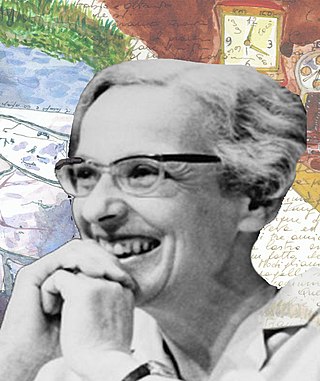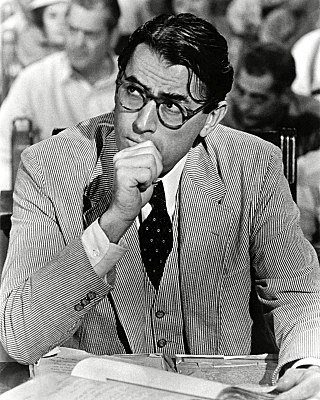Related Research Articles

Carl Gustav Jung was a Swiss psychiatrist and psychoanalyst who founded analytical psychology. Jung's work has been influential in the fields of psychiatry, anthropology, archaeology, literature, philosophy, psychology, and religious studies. Jung worked as a research scientist at the Burghölzli psychiatric hospital, in Zurich, under Eugen Bleuler. Jung established himself as an influential mind of his time, developing a friendship with Sigmund Freud, founder of psychoanalysis, conducting a lengthy correspondence, still paramount to their joint vision of human psychology. He is highly regarded as one of the most influential psychologists of all time.

Marion Jean Woodman was a Canadian mythopoetic author, poet, analytical psychologist and women's movement figure. She wrote and spoke extensively about the dream theories of Carl Jung. Her works include Addiction to Perfection, The Pregnant Virgin and Bone: Dying into Life.

Analytical psychology is a term coined by Carl Jung, a Swiss psychiatrist, to describe research into his new "empirical science" of the psyche. It was designed to distinguish it from Freud's psychoanalytic theories as their seven-year collaboration on psychoanalysis was drawing to an end between 1912 and 1913. The evolution of his science is contained in his monumental opus, the Collected Works, written over sixty years of his lifetime.
In analytical psychology, the shadow is an unconscious aspect of the personality that does not correspond with the ego ideal, leading the ego to resist and project the shadow. In short, the shadow is the self's emotional blind spot, projected ; e.g., trickster.

Marie-Louise von Franz was a Swiss Jungian psychologist and scholar, known for her psychological interpretations of fairy tales and of alchemical manuscripts.

Erich Neumann was a German psychologist, philosopher, writer, and student of Carl Jung.
The anima and animus are a syzygy of dualistic, Jungian archetypes among the array of other animistic parts within the Self in Jungian psychology, described in analytical psychology and archetypal psychology, under the umbrella of transpersonal psychology. The Jungian parts of the Self are a priori part of the infinite set of archetypes within the collective unconscious. Modern Jungian clinical theory under the analytical/archetypal -psych framework considers a syzygy-without-its-partner like yin without yang: countertransference reveals that logos and/or eros are in need of repair through a psychopomp, mediating the identified patient's Self; this theoretical model is similar to positive psychology's understanding of a well-tuned personality through something like a Goldilocks principle.

The Self in Jungian psychology is a dynamic concept which has undergone numerous modifications since it was first conceptualised as one of the Jungian archetypes.
John Beebe is an American psychiatrist and Jungian analyst in practice in San Francisco.
Puer aeternus in mythology is a child-god who is eternally young. In the analytical psychology of Carl Jung, the term is used to describe an older person whose emotional life has remained at an adolescent level, which is also known as "Peter Pan syndrome", a more recent pop-psychology label. In Jung's conception, the puer typically leads a "provisional life" due to the fear of being caught in a situation from which it might not be possible to escape. The puer covets independence and freedom, opposes boundaries and limits and tends to find any restriction intolerable.

Toni Anna Wolff was a Swiss Jungian analyst and a close collaborator of Carl Jung. During her analytic career Wolff published relatively little under her own name, but she helped Jung identify, define, and name some of his best-known concepts, including anima, animus, and persona, as well as the theory of the psychological types. Her best-known paper is an essay on four "types" or aspects of the feminine psyche: the Amazon, the Mother, the Hetaira, and the Medial Woman.
Anthony Stevens is a Jungian analyst, psychiatrist and prolific writer of books and articles on psychotherapy, evolutionary psychiatry and the scientific implications of Jung's theory of archetypes. A graduate of Oxford University, where he studied under Carolus Oldfield in the Department of Psychology in the 1950s, Stevens has two degrees in psychology in addition to a research doctorate (MD); during the 1950s Stevens also studied under Oldfield in the Department of Psychology at Reading. He is a member of the Royal College of Psychiatrists and a senior member of the Independent Group of Analytical Psychologists.

Jungian archetypes are a concept from psychology that refers to a universal, inherited idea, pattern of thought, or image that is present in the collective unconscious of all human beings. The psychic counterpart of instinct, archetypes are thought to be the basis of many of the common themes and symbols that appear in stories, myths, and dreams across different cultures and societies. Some examples of archetypes include those of the mother, the child, the trickster, and the flood, among others. The concept of archetypes and the collective unconscious was first proposed by Carl Jung, a Swiss psychiatrist and psychoanalyst.
In Jungian psychology, the Wise Old Woman and the Wise Old Man are archetypes of the collective unconscious.
Joseph Lewis Henderson was an American physician and a Jungian psychologist. Called by some the “Dean of American analytical psychologists", he was a co-founder of the C.G. Jung Institute in San Francisco and continued in private practice into his 102nd year. When he died, at the age of 104, he was "the last of the first generation of Jungian analysts who had their primary analysis with Jung."
Sylvia Brinton Perera is an author and a Jungian analyst.
Edward Armstrong Bennet MC, was an Anglo-Irish decorated army chaplain during World War I, a British and Indian Army psychiatrist in the rank of brigadier during World War II, hospital consultant and author.
The Society of Analytical Psychology, known also as the SAP, incorporated in London, England, in 1945 is the oldest training organisation for Jungian analysts in the United Kingdom. Its first Honorary President in 1946 was Carl Jung. The Society was established to professionalise and develop Analytical psychology in the UK by providing training to candidates, offering psychotherapy to the public through the C.G. Jung Clinic and conducting research. By the mid 1970s the Society had established a child-focused service and training. The SAP is a member society of the International Association for Analytical Psychology and is regulated by the British Psychoanalytic Council.
Adolf Guggenbühl-Craig was a Swiss psychiatrist and analytical psychologist, member of the archetypal school of Jungian analysis. He was the author of many publications.

Scholars including psychoanalysts have commented that J. R. R. Tolkien's Middle-earth stories of both Bilbo Baggins, protagonist of The Hobbit, and Frodo Baggins, protagonist of The Lord of the Rings, constitute psychological journeys. Bilbo returns from his journey to help recover the Dwarves' treasure from Smaug the dragon's lair in the Lonely Mountain changed, but wiser and more experienced. Frodo returns from his journey to destroy the One Ring in the fires of Mount Doom scarred by multiple weapons, and is unable to settle back into the normal life of his home, the Shire.
References
- ↑ Barbara Hannah The Mystical Experience Registry
- ↑ Joseph L. Henderson in Hannah's The Inner Journey - Lectures and Essays on Jungian Psychology (Inner City Books, 2000), p.144.
- ↑ Marion Woodman in Hannah's The Inner Journey - Lectures and Essays on Jungian Psychology (Inner City Books, 2000), p.8 .
- ↑ Dean L. Franz's portrait of Barbara Hannah in Hannah's The Cat, Dog and Horse Lectures (Chiron, 1992), p.18.
- ↑ Joseph, Michael (July 1978). "Barbara Hannah, Jung: his life and work. A biographical memoir". Medical History . 22 (3): 345–346. doi:10.1017/S002572730003307X. PMC 1082293 .
- ↑ Hannah, Barbara (2006), The Archetypal Symbolism of Animals: Lectures Given at the C.G. Jung Institute, Zurich, 1954-1958 (Polarities of the Psyche), Willamette, IL: Chiron Publications, ISBN 978-1888602333, LCCN 2005-032172